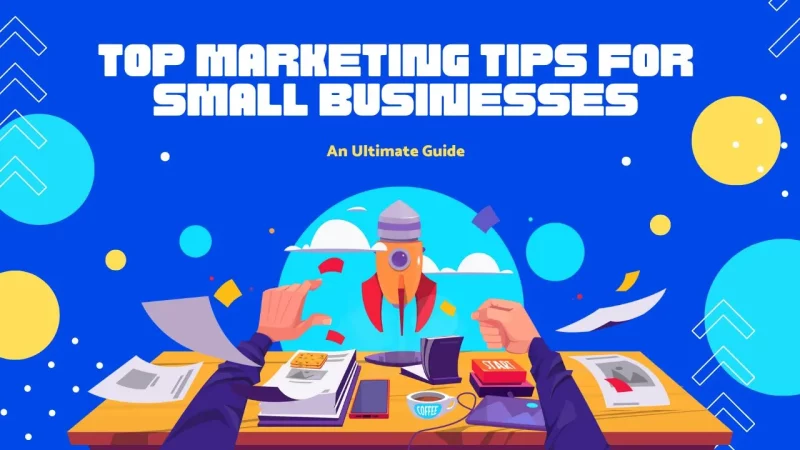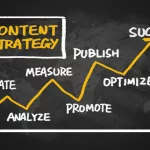You’ve got your business up and running, and everything is in place.
Now, it’s time to expand and reach more customers. But how do you do that? What steps should you take?
The key is to make your business visible to the right audience.
But again, how can you achieve this?
We’ve put together this guide to help answer these questions. Whether you’re already running a business or just considering starting one, and you’re unsure about how to begin marketing, this article is for you.
9 Best Marketing Strategies for Small Business
Every business is unique, with some products or services requiring education for customers, while others are well-known and need a stronger focus on sales channels.
The nature of a product depends on various factors, such as pricing and customer demand and need.
How your competitors are positioned and how well-known they are also play a significant role.
Because of this diversity, this guide is designed to be general and not tailored to any specific business. However, you can use it as a template to guide your marketing efforts and ensure you’re covering all the essential points.
Let’s explore these tips to help you enhance your marketing strategy.
Understand Your Audience
Understanding your audience is crucial, and you might have heard this advice before. If not, now you have!
But why is it important to adopt your customer’s mindset?
There are several reasons, including:
- You identify the challenges your customers are facing.
- You discover the communication channels they use, whether online forums or offline meetups.
- You begin to think from your customer’s perspective.
- You learn to communicate, like how to text someone for the first time professionally. This way your message will be clear and well-received.
What comes after recognizing these points?
Offer Solutions and Build Relationships
Once you understand your audience, the next step is to become a visible source of solutions.
One way to do this is by gathering insights directly from your audience. Using well-crafted product survey questions for consumer insights, for instance, can help validate your assumptions and uncover deeper motivations behind customer behavior. These surveys enable you to make data-driven decisions that drive product success. Show up where relevant discussions are happening in your industry.
This approach positions you as the go-to expert, even if you’re not one yet. Consistently engaging in these discussions will eventually make you an expert.
For example, imagine you own a software company and your target audience frequently uses Reddit. By actively answering their questions on Reddit, you are not only helping solve their problems but also building relationships with them.
This method helps strengthen your connection with potential customers, showing them that you are knowledgeable and reliable.
Below is an example of one prospect, I was reaching out to on Reddit and see how he responded.
People are up for solutions, they respond when offered a solution!
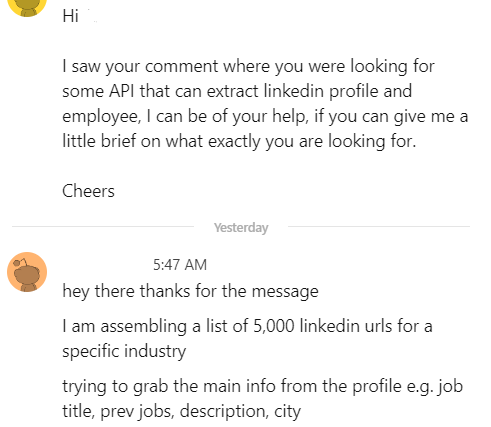
Building a community around your product or service
Building a community around your product or service can significantly enhance user engagement and brand loyalty. A community forms when people come together to discuss a central theme—in this case, your product.
As your product or service evolves, adding new features and use cases, early adopters become well-versed in its nuances. These seasoned users are invaluable as they can guide newcomers who are exploring your product for the first time.
Creating a community facilitates an environment where experienced users assist new ones, gradually becoming ambassadors for your brand. This process not only helps in onboarding new customers but also fosters a sense of ownership and loyalty among community members.
To encourage participation and reward the most helpful members, consider offering incentives. You can streamline the process of accessing such exclusive rewards and enhance user engagement using QR codes. This could be in the form of additional credits, exclusive access to new features, or even free services for a certain period. Such rewards can motivate members to contribute more actively and feel more connected to your brand.
In the SaaS industry, building a community is a crucial strategy. Many SaaS businesses successfully leverage their user communities as both a support network and a team of brand ambassadors, enhancing customer satisfaction and retention. Partnering with a startup platform can help scale these efforts, creating a self-sustaining ecosystem that drives engagement and long-term growth.
Integrating user-generated content (UGC) tools, such as an FB widget, free Google review widget, or TikTok widget, can further enhance this strategy by showcasing authentic user experiences, strengthening community interactions, and boosting brand credibility
Setup a Website Soon
Today, Google is often the first place people turn to with their questions. With over 8.5 million searches happening daily, there’s a good chance that your target audience is on Google right now, seeking answers to problems that your business can solve.
Why Should You Set Up a Website?
Creating a website allows you to address these relevant queries within your niche. Moreover, in today’s digital age, having a website with clear messaging is not just beneficial—it’s essential. Customers often look for this clarity when they choose a service provider.
If you haven’t set up a website yet, now is the time to get started.
Understand Basic SEO & Content Marketing
Once your website is set up, it’s time to get familiar with SEO and content marketing. SEO is the way you can build a sustainable business over the years if you start investing in it today. Yes, it takes time and therefore it becomes important for you to start as early as possible.
What is SEO?
Search Engine Optimization or SEO is a technique used to improve the rankings of your webpage for a specified key term when searched on a search engine for example Google.
However, this field itself is vast & is out of the scope of the topic of this blog. We will understand some basics in SEO.
So SEO starts by looking at the keywords or search terms people are looking for on search engines. We list out all those search terms with the help of free and paid keyword tools.
After finding them, and clustering the same keywords together we can now build dedicated pages catering to those search terms.
Let’s take an example here.
Supposing we are an SEO Rank Tracker tool & we want to see what keywords people are looking to search for those types of tools.
We will start by finding keywords. The tool we will be using is Serpple, which is an SEO tool that can give us these search terms.
You can sign up for our tool, and get some free searches without paying anything.
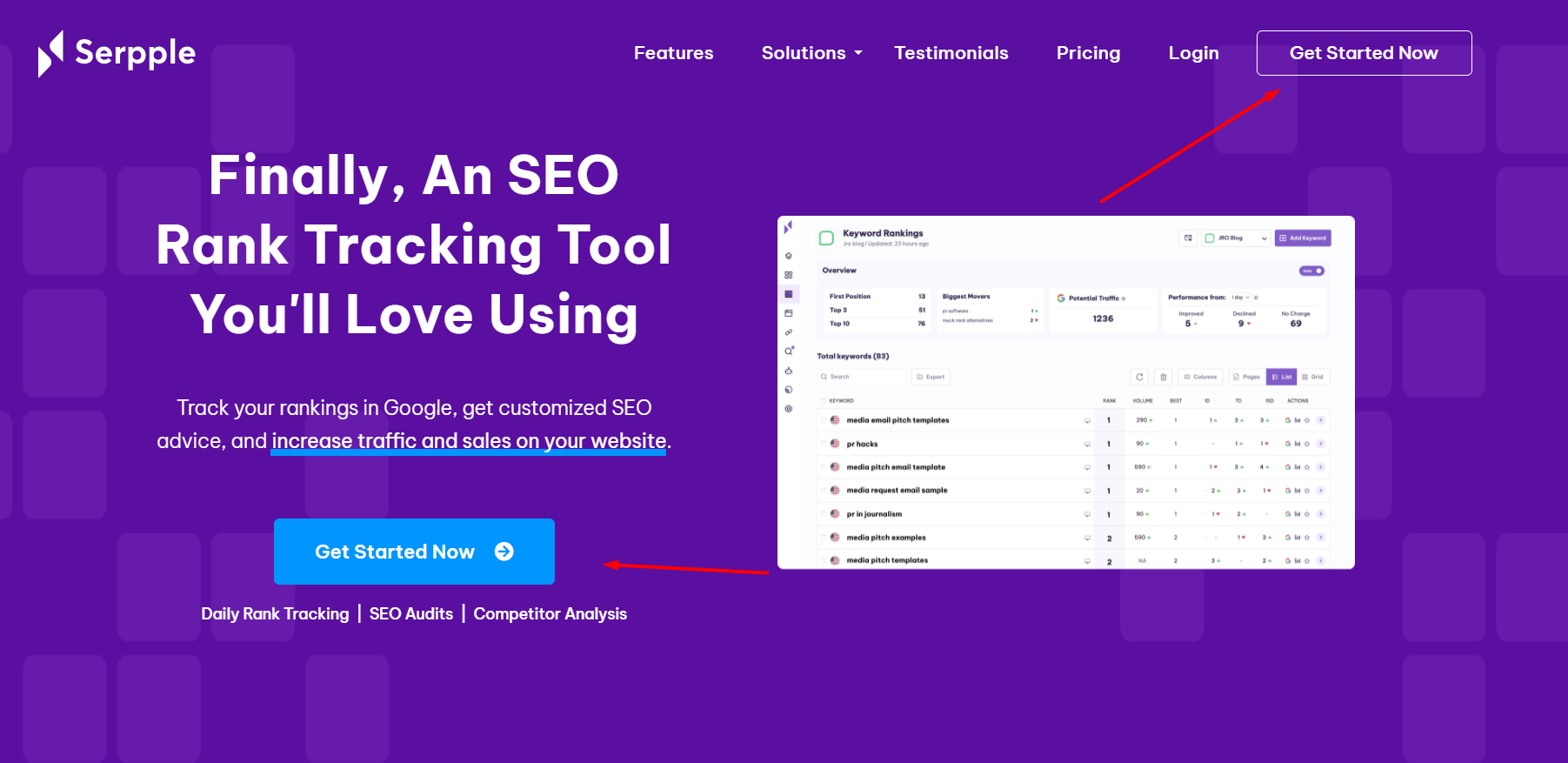
After signing up, you will land on to our dashboard, which will look something like this: –
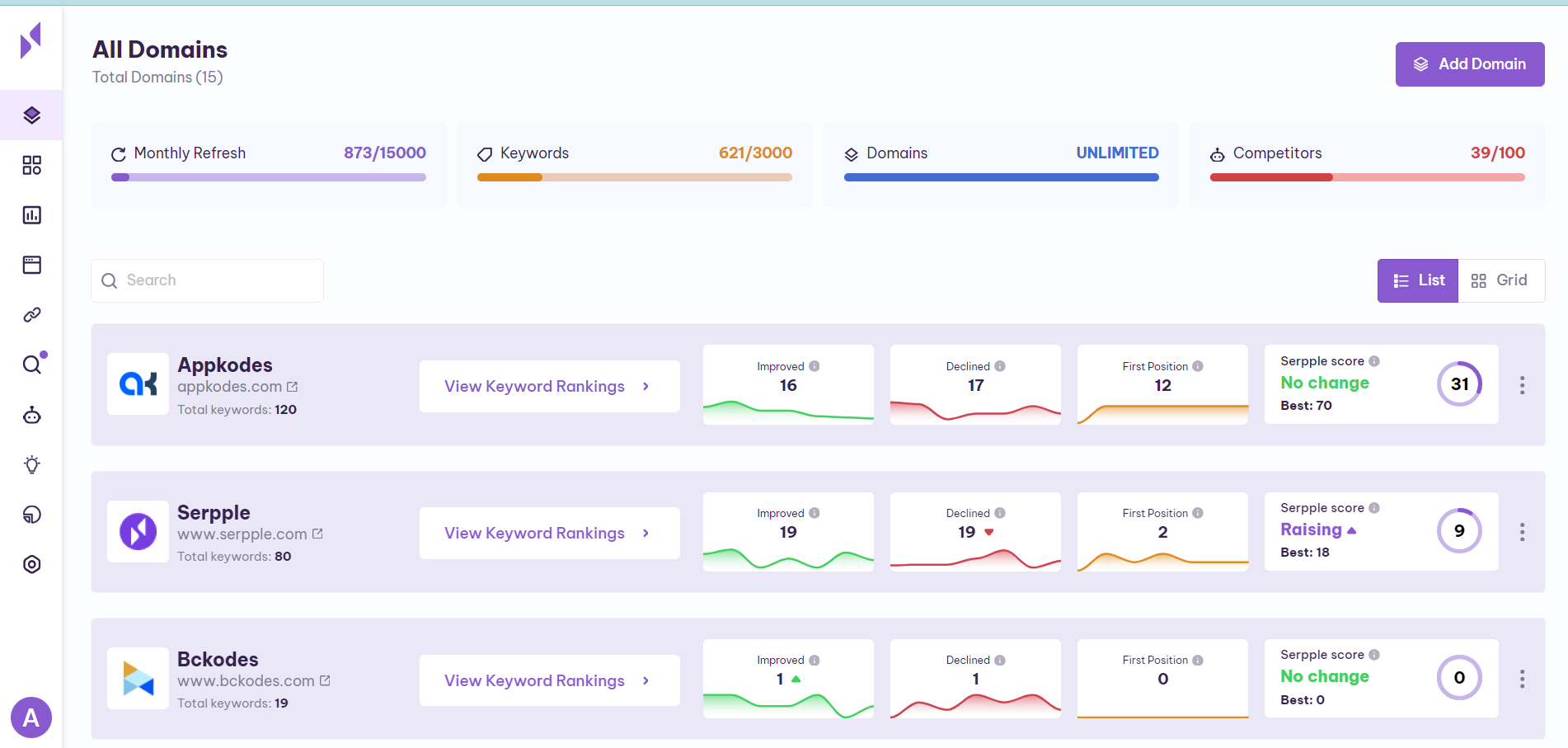
Very fuzzy for first-time starters though, however, don’t get overwhelmed since this tool is an overall SEO tool, as a beginner might get confused.
However, we will get straight to the feature of this tool we will be using.
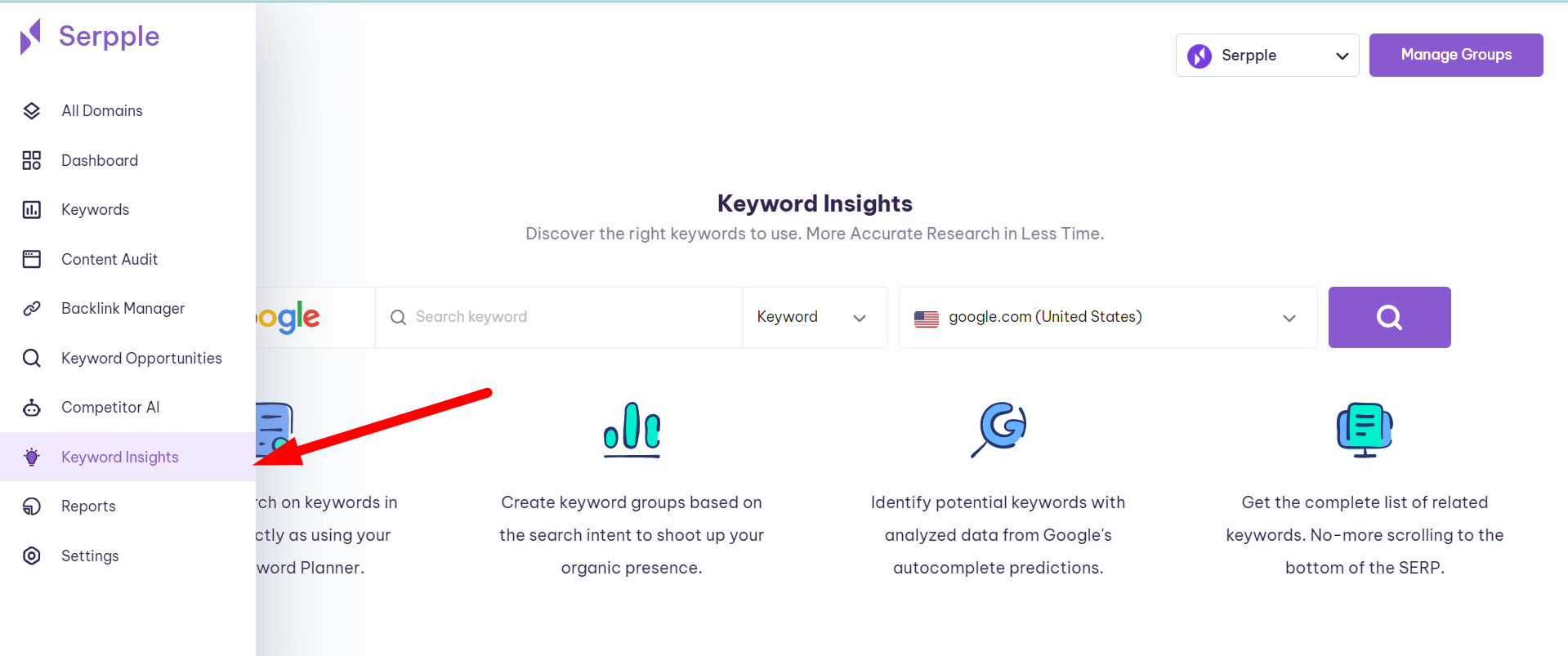
From the left, we will select the keyword insights option, we will land on a new dashboard, where we will be asked a primary or seed keyword to insert.
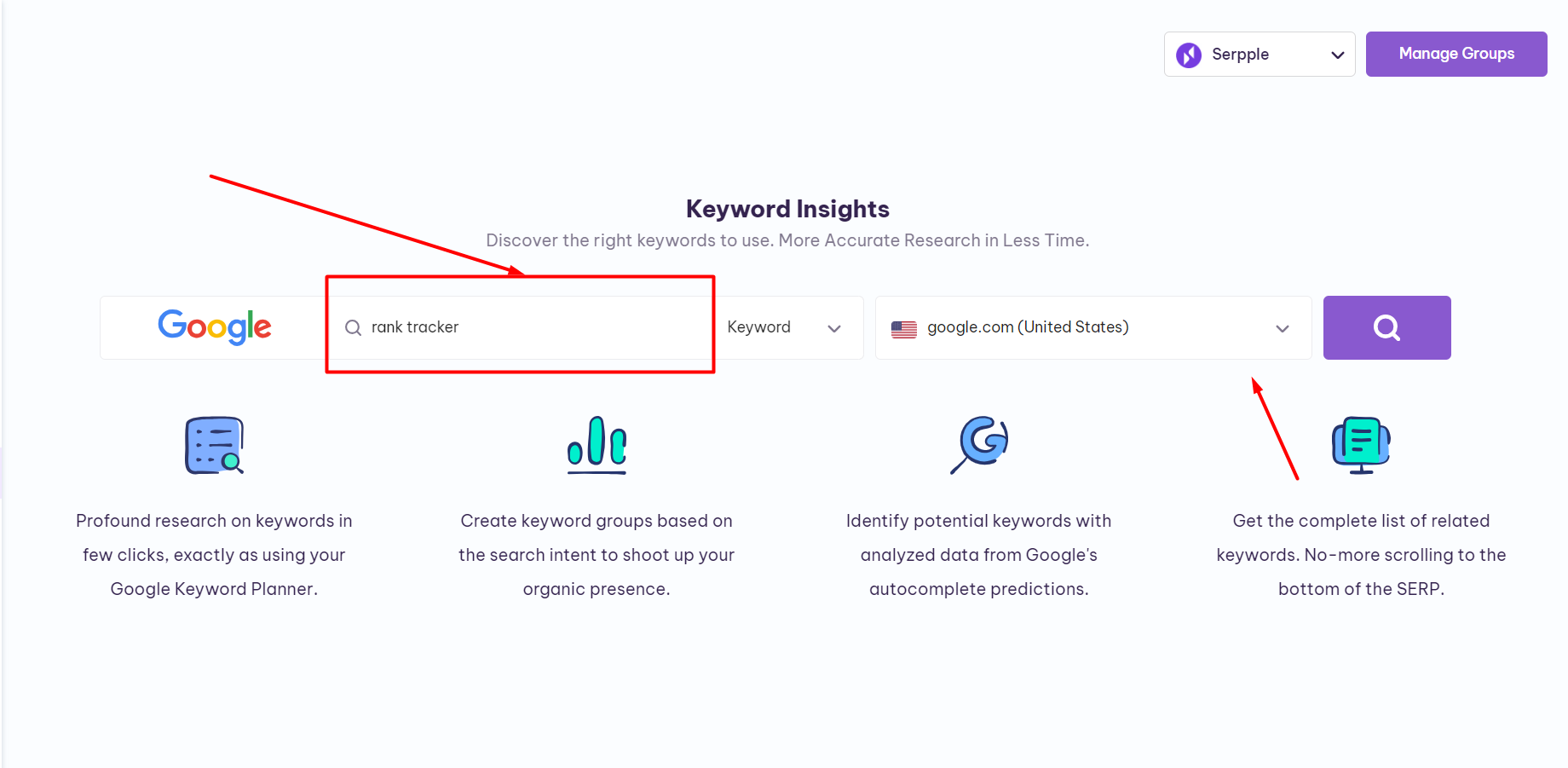
Fill in the seed keyword and select the country for which you want to look the volume & related keywords.
For our example, we are looking for the term “rank tracker” in the tool.
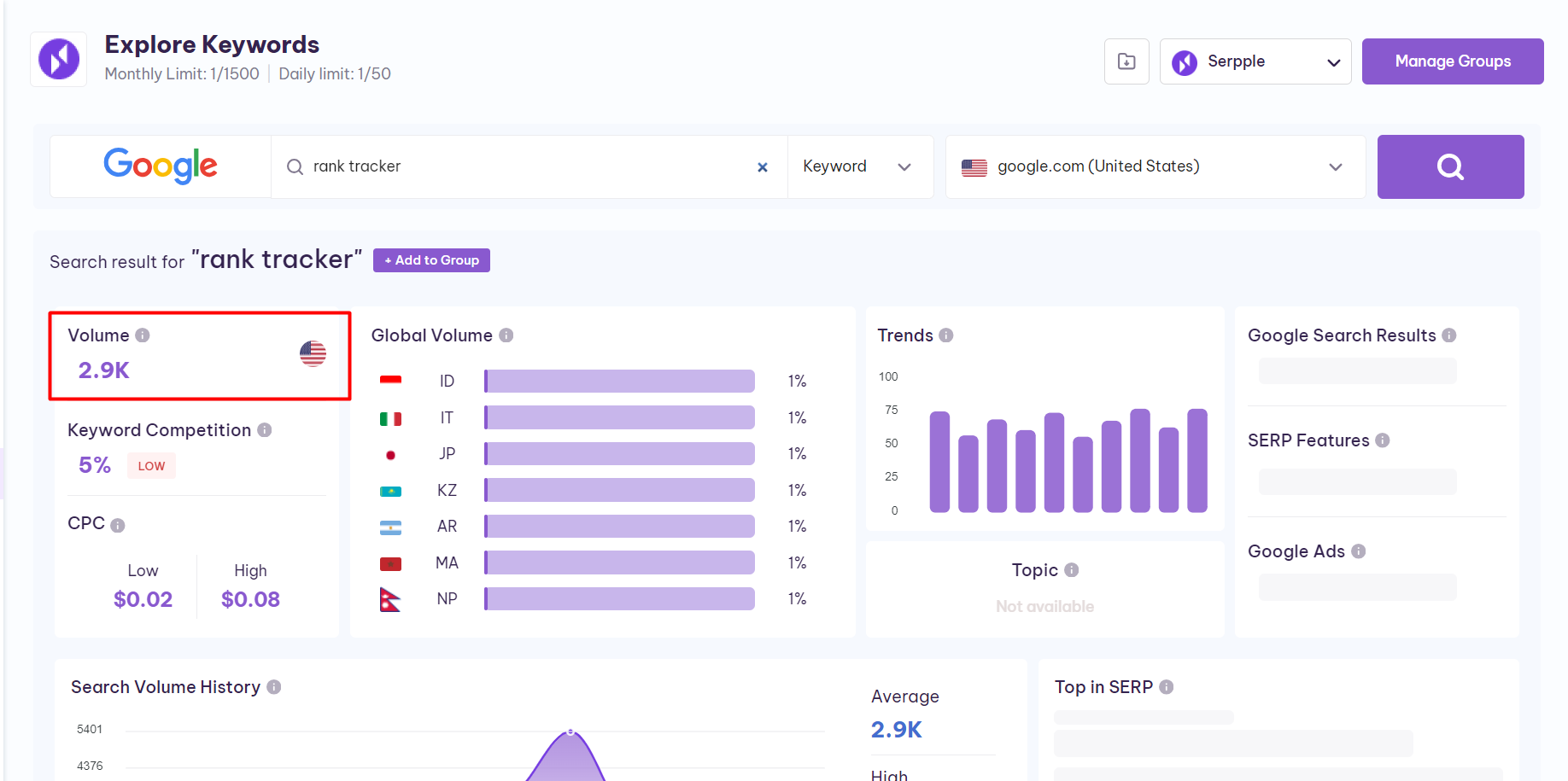
The marked in red shows the number of times the keyword is typed in the search engine in over one month.
This gives us the impression that yes, there are users who are interested in products like us.
Further, we will see related keywords that people are using to find such products.
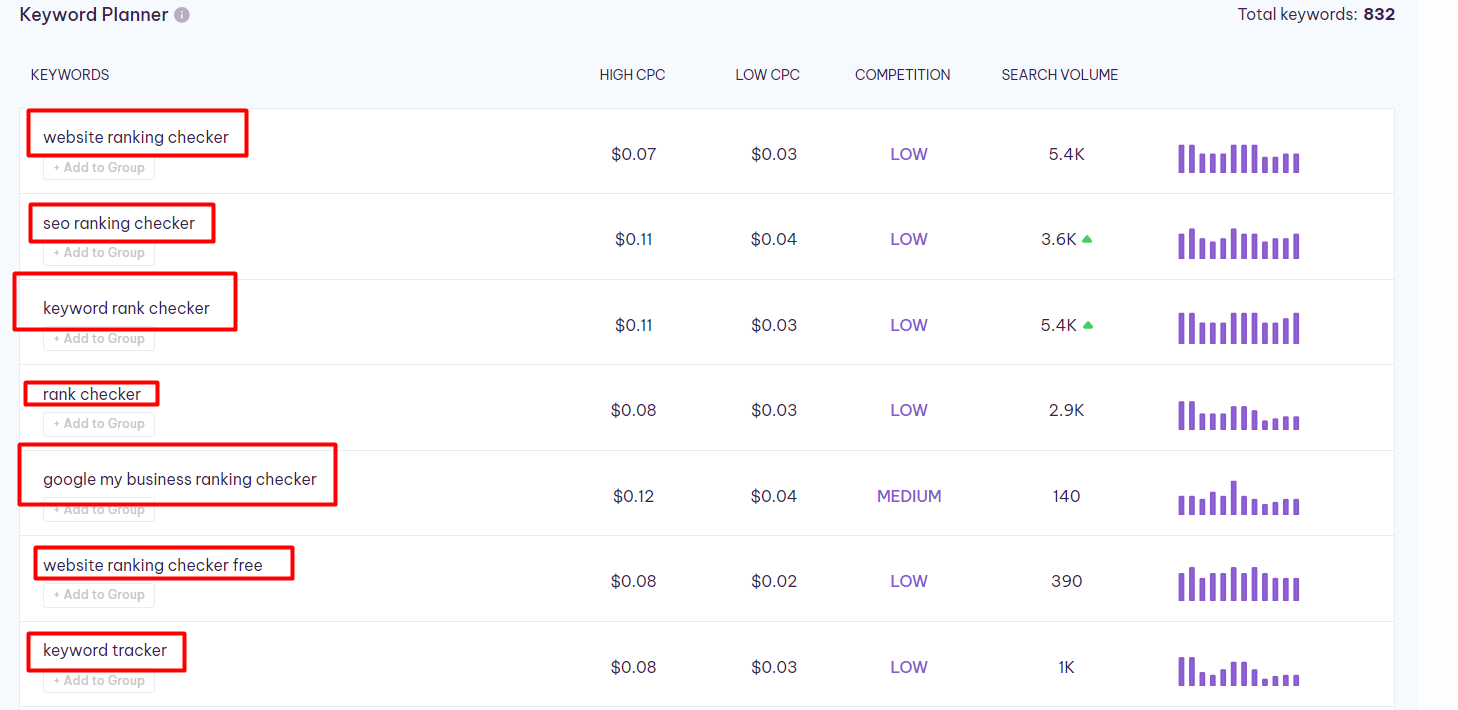
There are more keywords that you can find.
The next step would be to look for keywords that fall in the same category and can be used on the same page. Content is made for the page, depending upon the intent and the buyer journey a user is in.
Further, once this content is made, we wait for it to rank on Google and optimize content timely to keep it fresh and updated.
Read More: 9 Ways to Increase Your Website Rankings in 2024
Prepare a Content Calendar
After having keywords and clusters, we can now move on to looking at what should be prioritized. A couple of things to look out for to preparing a content calendar.
One key metric you can look for is the competition metric provided by Serpple for keywords.
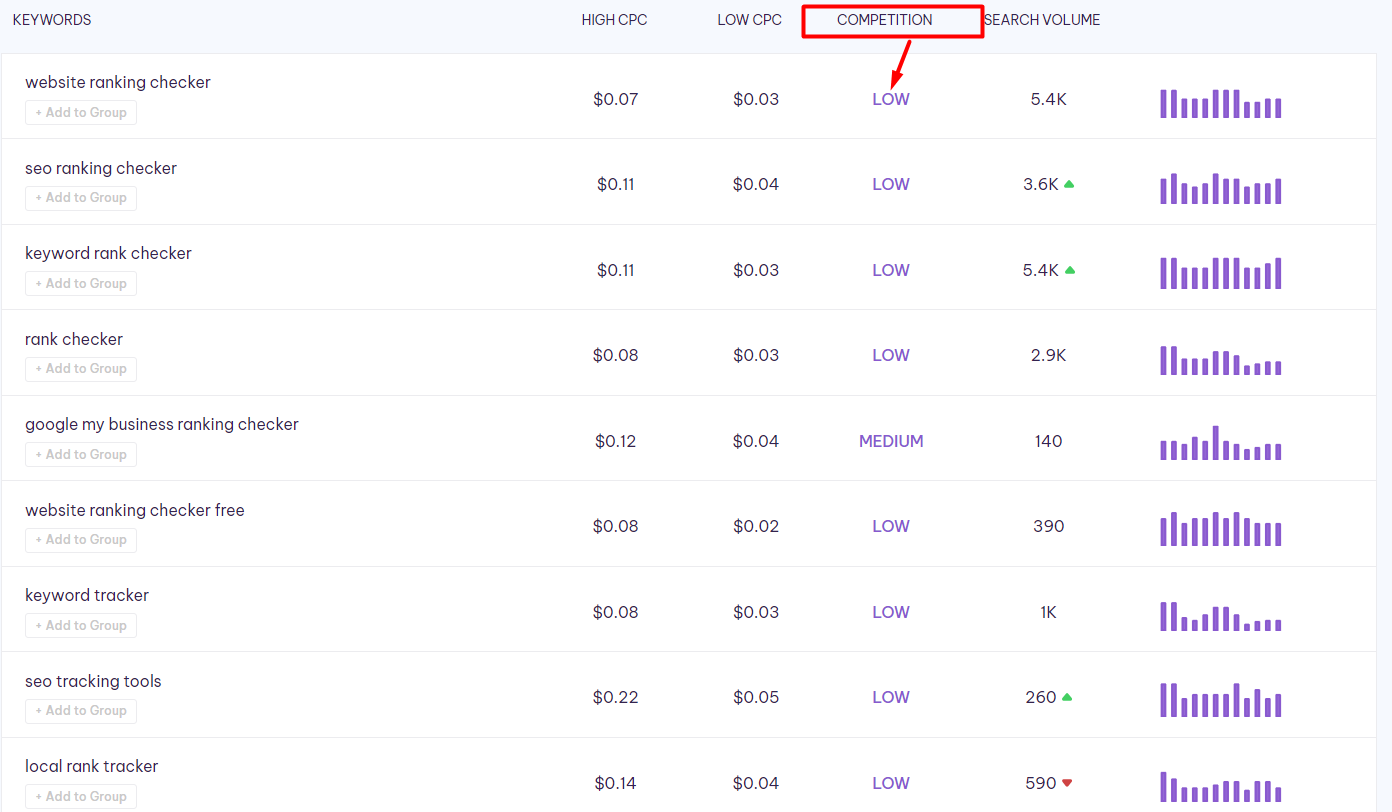
This way when you are just starting you can pick the keywords with low competition and make dedicated pages around it and incorporate in your content calendar.
A content calendar is an essential tool for effective content marketing, helping you to plan, organize, and schedule all content-related activities. Here’s how to prepare a content calendar and why it’s crucial for your content marketing strategy:
- Identify Key Dates and Events: Start by marking important dates that are relevant to your industry, such as trade shows, seasonal events, or product launches. These dates will serve as anchors for your content planning.
- Plan Content Themes: Based on the keywords you’ve gathered and the important dates identified, plan out the themes for your content. This thematic planning helps ensure that your content remains relevant and engaging to your audience throughout the year.
- Schedule Posts: Decide how often you want to publish content. For many businesses, a mix of daily, weekly, and monthly content works well. Use your content calendar to schedule each piece, ensuring a consistent flow of content to keep your audience engaged.
- Assign Tasks: Detail who is responsible for creating, editing, and publishing each piece of content. Assigning tasks helps prevent bottlenecks and keeps your content strategy on track.
With the help of a time tracking software you can ensure that tasks get completed on schedule, iPaaS solutions makes automation easy and efficient. They serve as an integration platform that connects your content calendar with project management tools, you can automatically assign tasks and streamline your workflow. This ensures a smooth and efficient workflow. - Monitor and Adjust: Once your content calendar is in action, monitor its effectiveness. Check engagement levels and be prepared to adjust your strategy or schedule based on what content performs best.
Benefits of a Content Calendar
- Consistency: A content calendar helps you post regularly, which is key to building and maintaining an audience.
- Strategic Planning: It enables strategic alignment of content with business goals, improving the impact of your marketing efforts.
For deeper insights, strategic planning consultants can help refine your content strategy to better support overall business objectives. - Efficiency: Planning content in advance can save time and resources, allowing for better allocation and use of content creation resources.
- Visibility: It provides a clear overview of what content is coming up, which is essential for coordinating with other marketing activities.
Setting up a timeline is necessary around your content. You will know which pages are working and which aren’t. According to the Pareto principle, 20% of your pages bring 80% of your traffic.
To know early about those 20% of pages you have to execute fast and therefore a content calendar is a must when you are laying the foundation of SEO.
Get Familiar with the Basic Free Analytics Tool
Herein we will look into some basic analytics tools, to monitor your performance of the content. Quickly understanding the metrics these tool provide will help you understand much more about the content you are posting.
These tools offer valuable insights that can help optimize your marketing strategies without the need for a substantial initial investment.
Here’s a closer look at why these tools are critical and how you can start using them:
Why Use Basic Free Analytics Tools?
These tools provide essential data about your website’s traffic, user behavior, and content effectiveness. With these insights, you can make informed decisions about where to allocate resources, what content resonates with your audience, and how to improve user engagement. They are crucial for measuring the success of your SEO efforts and overall digital presence.
Getting Started with Google Analytics
Setup: Google Analytics is the most widely used free analytics tool. To start, create a Google Analytics account and add the tracking code to your website. This will allow you to collect data on your site’s visitors.
Understand Key Metrics: Familiarize yourself with key metrics such as:
User Sessions: This measures the total number of visits to your site. Tracking sessions can help you understand the ebbs and flows of traffic.
Bounce Rate: This measures the percentage of visitors who leave your site after viewing only one page. A high bounce rate might indicate that your site’s landing pages are not engaging or relevant to the audience.
Conversion Rate: This is critical for evaluating the effectiveness of your website in achieving its goals, such as filling out a contact form or completing a purchase.
Set Goals: Google Analytics allows you to set and track goals. For instance, if you want visitors to sign up for a newsletter, you can set this as a goal and track how many visitors complete this action.
Review Reports Regularly: Google Analytics offers a variety of reports that can help you understand your audience better, such as geographic distribution, device usage, and source/medium reports. Making use of marketing report templates, you can save time on report creation and focus more on strategic decision-making. So, regularly reviewing these reports helps you refine your strategies for improved results.
While Google Analytics is a comprehensive tool, you might also consider other free tools that can provide additional insights:
- Google Search Console: This tool helps you monitor and maintain your site’s presence in Google Search results. It gives insights into what queries bring users to your site, how often your pages appear in search results, and how often people click through for those queries.
- Microsoft Clarity: Microsoft Clarity is a free tool that provides visual insights into user behavior on your website. It offers heatmaps and session recordings that help you see exactly what users are doing on your site, which can be incredibly valuable for understanding user experience issues and opportunities for improvement.
- Serpple: If you’re looking for a simple tool to get insights into SEO performance, Serpple offers keyword suggestions, ranking insights, and site audit features.
To maintain a look into which keywords are ranking high and which one fell from the search engine result pages, Serpple offers an intuitive dashboard, wherein you can track your keywords daly.
When onto the dashboard, you can add your domain to serpple and further add the keywords you want to track.
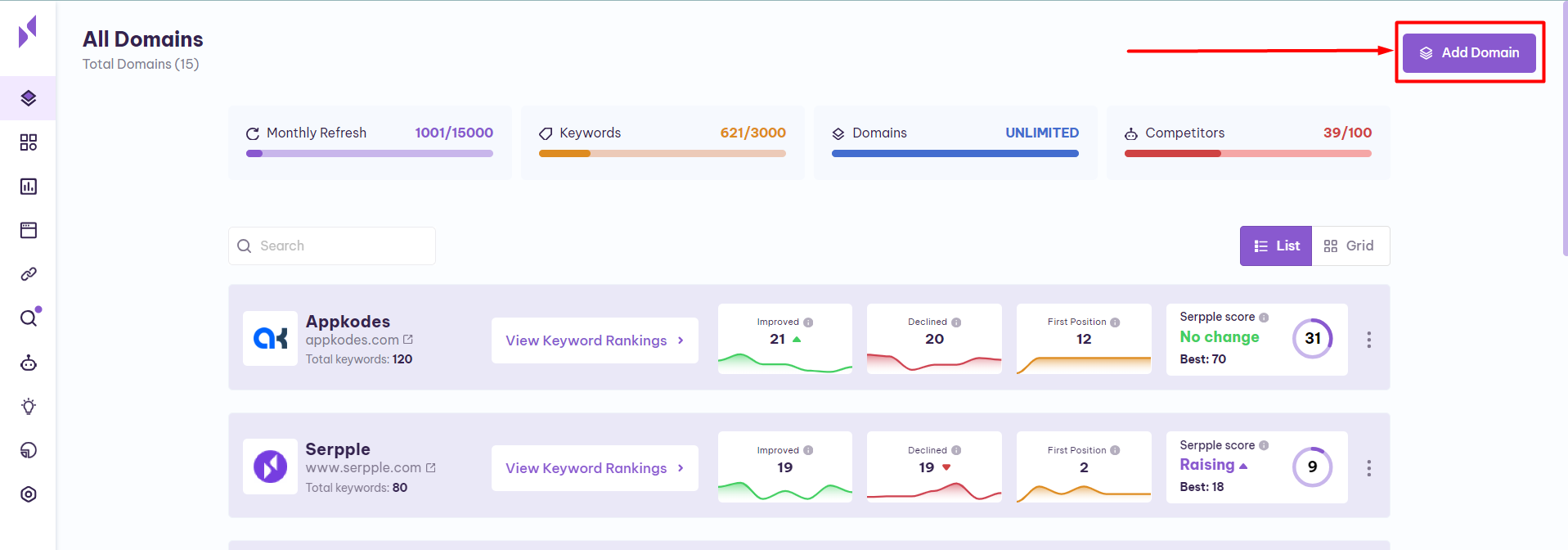
When you add your domain here, Serpple will ask you to give specific queries and the location for which you want to track.
The rankings are updated daily and you can check which keywords fall, and which ones took high.
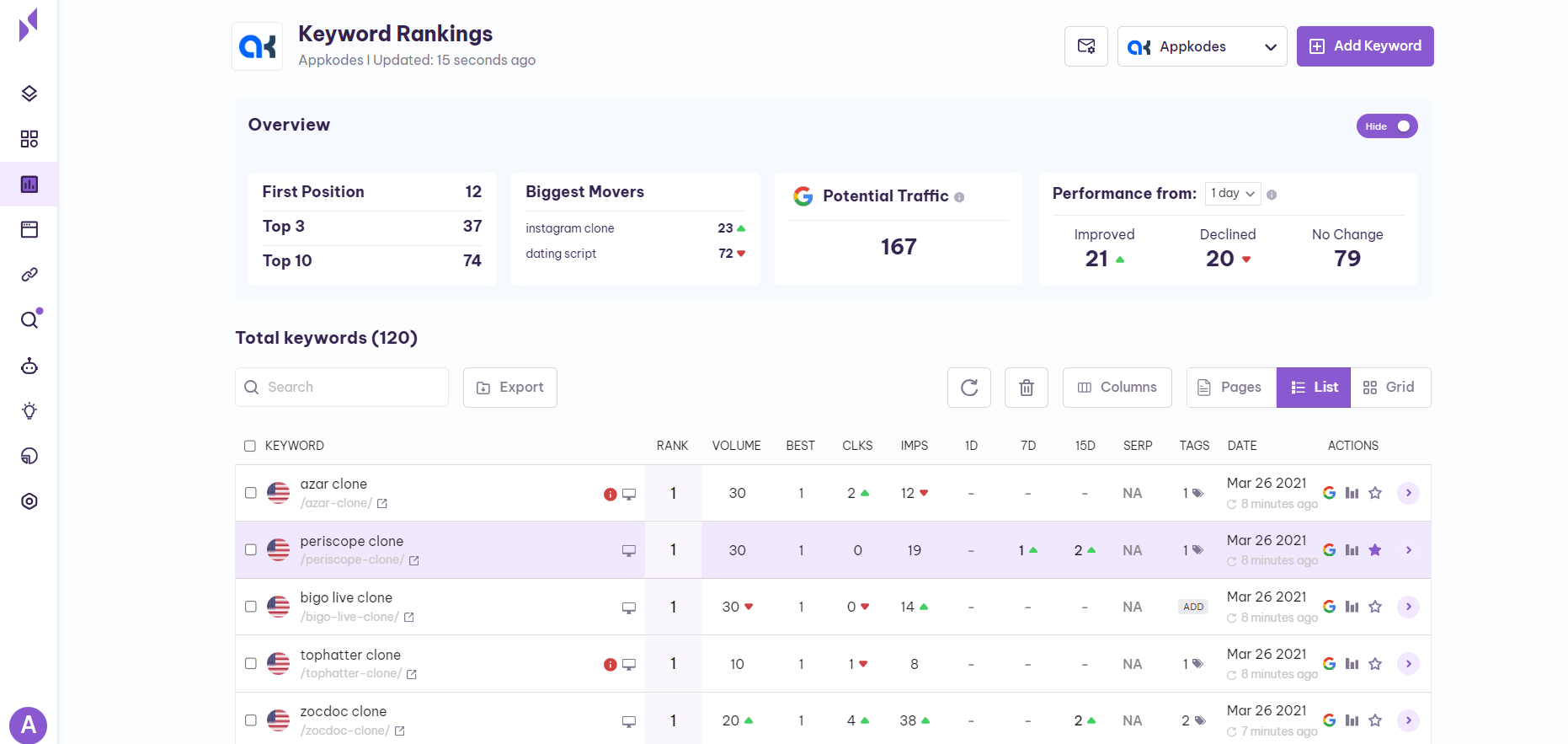
Leverage Owned, Earned, Paid Media
Each type plays a unique role in how you reach and engage with your audience. Here’s a breakdown of each type and how you can use them effectively:
Owned Media
This refers to any web property that you control and is unique to your brand, such as your website, blog, or social media pages. The primary advantage of owned media is complete control over the content and the message.
Example: If you run a local bakery, your owned media might include your business website where you post menu updates and blog articles about baking tips.
How to Leverage: Consistently update your owned media with high-quality content that reflects your brand’s voice. This helps build a loyal audience base that returns to your platforms for more information.
Earned Media
Earned media is any publicity you gain through word-of-mouth, whether it’s the result of content you’ve distributed, the relationships you’ve built, or the customer service you’ve provided. This can include press coverage, positive reviews, social media mentions, and shared content.
Example: Customers who visit your bakery might post about their positive experience on social media, which gets shared by others, increasing your visibility without any direct cost to you.
How to Leverage: Focus on providing excellent service or products that people want to talk about. Engage with customers who mention your brand online and encourage satisfied customers to leave reviews.
Paid Media
Paid media involves any marketing that you pay for, typically used to promote content in order to drive earned media, and direct traffic to owned media properties. This can include PPC advertising, branded content, and display ads.
Example: You could run a Facebook ad campaign to promote your bakery’s new seasonal menu, aiming to attract more customers to your store and website.
How to Leverage: Start small with a manageable budget to test what works for your audience. Use targeting options to reach specific demographics who are most likely to be interested in your products.
Combining All Three
For the most effective marketing strategy, combine owned, earned, and paid media. Use your owned media to showcase your expertise and engage your audience, earn media by encouraging sharing and receiving feedback, and boost your visibility with strategic paid media campaigns. This integrated approach helps to reinforce your marketing message and reach more potential customers efficiently.
By understanding and leveraging these three types of media, small businesses can create a comprehensive marketing strategy that maximizes visibility and engagement with their target audience, driving both growth and loyalty.
Collaborate with Other Businesses (Co-Market)
Collaborating with other businesses, often referred to as co-marketing, is a strategic approach that allows companies to share resources, expand their reach, and tap into each other’s audiences. This strategy can be especially beneficial for small businesses looking to increase visibility and drive growth without a significant increase in marketing costs. Here’s how to effectively engage in co-marketing and some examples to illustrate the concept:
Benefits of Co-Marketing
Extended Reach: By partnering with another business, you can access their customer base, which might introduce your brand to a new segment of the market.
Shared Resources: Co-marketing allows you to share the financial and logistical burdens of marketing campaigns, making larger projects more feasible.
Increased Credibility: Associating with established businesses can enhance your brand’s credibility, especially if you’re a smaller or newer company.
How to Collaborate with Other Businesses
Collaborating with other businesses can be a smart way to stretch your marketing efforts without breaking the bank. Start by finding businesses that complement yours—they should target similar customers but offer different products or services.
For example, a coffee shop and a bookstore might team up so customers who buy a book get a coffee discount, and vice versa.
Set crucial goals for mutual benefits. Both businesses need to agree on what they want to achieve, like boosting sales or reaching new customers, which will help you gauge the success of the collaboration later.
This could also include aligning resources, such as dedicated phone agents, to support joint campaigns or handle increased customer inquiries more effectively.
Next, think about promotions that could work for both of you. This might mean planning events together, offering discounts on combined purchases, or starting a shared loyalty program.
For instance, a local gym and a health food store could run a “Health Month,” giving discounts on gym memberships and health foods when bought together.
Don’t forget to use each other’s marketing tools. You could share space in a newsletter, host a webinar together, promote each other on social media, and share each others’ digital business cards for promotion.
After your campaign, take time to review how it went. Look at customer feedback and sales numbers to see what was successful and what could be improved for next time.
This way you grow each other’s audience trust, you also increase the transparency between you and your audience. Keep looking for such partners in early stages, this can make your growth pace speedy.
After your campaign, it’s important to assess its effectiveness. Review customer feedback and sales data to understand what worked and what could be improved. This evaluation not only helps in refining future campaigns but also builds trust with your audience by showing that you value their input and are committed to offering them the best.
Additionally, forming such partnerships early in your business’s life can accelerate growth, allowing you to expand your reach and capabilities more quickly. Keep an eye out for potential partners from the start to maximize these benefits.
Take Away
Marketing is ongoing and dynamic in nature, once you start you have to keep implementing and iterating as per the data you receive.
Reaching out to customers and connecting with them is the ultimate way to keep growing and sustaining your business for long. The strategies we discussed can be a starting point, however you can innovate them as per you business and marketing goals.
Remember, the flexibility to adapt to customer feedback and market changes is crucial. Always be ready to pivot and refine your tactics to maintain relevance and effectiveness. By staying committed to this adaptive approach, you’ll not only survive but thrive.
Published by
Adam White
Adam White is a 20+ year SEO professional who has optimized over 400 websites, built and sold over 20 internet and SaaS businesses all with SEO as the main traffic source. Follow him on Twitter/X
All stories by Adam White
